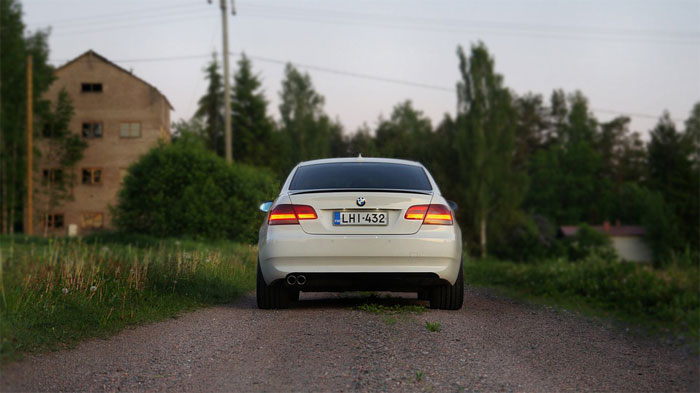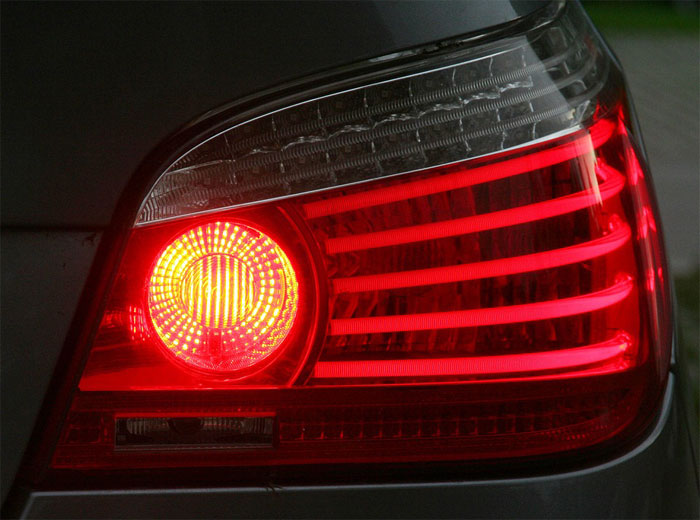Why Do My Brake Lights Work but My Tail Lights Don’t?
by Chris Lewis.
Car troubles are something we all must encounter at some point or another. Sometimes these can be minor problems, while other times, they can cost you a pretty penny.
So, it's wise to keep an eye on issues your car is having before it becomes too big. The headlights and tail lights are ones you should keep an eye on.
Many of you might wonder why my brake lights work, but my tail lights don't. If you are one of them, then this is exactly what you need to read. You will know the reasons why you're facing these issues, and will also see some ways to deal with it for little cost.
Contents
- Why Do My Brake Lights Work but My Tail Lights Don't
- Some Possible Solutions to My Brake Lights Work but My Tail Lights Don't
- Any Blown Fuses in either Your Trunk or Under the Hood of the Vehicle
- Any Loose Wires Leading to the Tail Light or to the Brake Lights
- There Is a Break in the Wire Somewhere Along the Line Leading to Your Tail Lights
- Just a Bad Brake Light Switch
- Some Loose Wires in either Side of Trunk Where Tail Lights Are Connected
- Brake Light Switch Problem
- Conclusion for Brake Lights Work but My Tail Lights Don't Problems
Why Do My Brake Lights Work but My Tail Lights Don't

Here, we'll go through the probable reasons one by one.
Faulty Tail Light Bulb
One of the main reasons why you might see your brake lights working while your tail lights don't is because the bulbs installed in the tail light were faulty.
You should run some tests to make sure if the bulbs are the main culprit or not and to do that, you will need to remove the tail light cover.
The task you have is not difficult. You have to make sure the filament in the bulb works. If you see illumination, then it is working, and something else might be the problem. If it doesn't, we know what has been causing the problem all along.
So, change out the bulbs. If you don't know how to do that, then there are many easy to follow instructions and videos available. Most of them will help you reach your desired outcome. If the tail lights still don't work, then you need to look a little harder for other reasons.
Problematic Fuse
More than the faulty bulbs, you will see that there is something wrong with the fuse, which makes the whole electric system of the car run smoothly without anything getting damaged.
Its main job is to break when the flow of current is too high. This breakage protects the electric system.
Now, if you want to check the fuse, then there are two places you can find them in the car. The first one is in the panel found in the cabin inside the car. You shouldn't have much of a tough time finding it.
The second place is just under the hood of the car. That is where all the important parts of the car are placed. All you need to do is identify which one the fuse is. You should see a black box that has a lot of wires. The fuse can be reached when the cover is removed.
Moreover, the fuse obviously controls different parts and systems of the car, so you have to look for the right one. This is something you should find in the owner's manual or might look for it on the internet.
Use a fuse tester to see if it is up and running or not. The way to find out if it works or not is to see if the tester lights up or not. If it does, then it is fine. However, if it does not light up, then you will have to buy a replacement for it.
Bad Bulb Socket
Say you checked out the fuse, and the bulbs, then you find out that both of them are absolutely fine, then the next thing you should be looking into is the socket. Sometimes failure in the socket might lead to the tail lights not working.
The reason why the sockets might get damaged is moisture. Sometimes buildup of any type of moisture might mess up the wiring, and then that would lead to failure. Poor connection of the wiring might also lead to the sockets not working properly.
If it is due to the buildup of moisture, then you should be able to see some type of discoloration on the socket. That would be a sign that you need to change it or get it looked at. Also, if the pin of the socket is broken, you are very likely to see the light not working.
So, keep an eye out for these visible problems so you can sort it out quickly.
Well Worn Wiring
The wiring system is what keeps everything running smoothly. And if there is some wire out of place, then chances.
You can't go on about this without having a proper diagram of the wiring of the car. And you have to locate the ones that are connected to the tail lights and then figure out what is going on. Going over all the wires to find a fault in the tail light is too time consuming and unnecessary.
Along with a worn-out wire in the car, you should also keep an eye on the ground circuit, at times that might also cause an issue with the tail lights.
Faulty Light Sensor
With time more and more automatic features are getting added to cars. This makes driving much easier for us.
One of the new features is the light sensor. The computerized system of the car can often detect when to turn on which light. If there is something wrong with the sensor, then that might be why your tail lights aren't working.
The sensor might have a command of not turning the lights on during the day, but because the sensor isn't working properly, it might not be able to tell the difference between day and night.
So, it won't turn the tail lights on at any time of the day. The sensor can either go bad, in which case you will have to get it fixed or replace it with a jeep light bar.
There is also a situation where the dirt in the sensor stops it from working properly. In that case, a good cleanse will do the job.
Failure in the Control Switch

The very last reason why your tail light might not be working even when the brake lights work is because of the control switch. When you want to turn the headlights or the tail lights on you, have to press a switch.
It sends the signal, and that's when the lights start working. If the switches were at fault, then there would be no signal.
You might not be able to figure this out yourself, but if you have already exhausted all the other options, then chances are the control switch might be the culprit behind all the issues. In order to ensure whether it is the case or not, you will have to take it out of the dashboard and run some tests.
If you are not comfortable doing it, then you can always show it to someone who has more experience or take it to a professional to make sure everything runs smoothly.
Some Possible Solutions to My Brake Lights Work but My Tail Lights Don't
It is important to find the problem before trying to fix it. Here are some common problems that might cause you to have only your brake lights lit up but not tailights.
Any Blown Fuses in either Your Trunk or Under the Hood of the Vehicle
The first thing you should check is if there are any blown fuses in either your trunk or under the hood of the vehicle that controls which circuits turn on when the brake pedal is activated. It is also possible that the emergency flashers won't work, so double check to make sure they are working if needed. The car manual has a comprehensive reference for all fuses and their location under the hood or in the trunk.
Any Loose Wires Leading to the Tail Light or to the Brake Lights
Another thing you should check is if there are any loose wires leading to the tail light or to the brake lights. It is possible that one of these wires became loose somehow to where they are not connected properly. If this problem persists, it might be time for a professional mechanic to take a look at your vehicle.
There Is a Break in the Wire Somewhere Along the Line Leading to Your Tail Lights
It is also possible that there is a break in the wire somewhere along the line leading to your tail lights. This can be fixed by taking the vehicle to a mechanic for them to find where the break in the wire is and hopefully fix it, or you may choose to take matters into your own hands by doing it yourself.
On some cars there are tail light switches that need to be replaced if light bulbs continually go out or brake lights don't work after replacing all light bulb. Sometimes this is caused by moisture seeping through tail light lenses. Replacing worn-out lens gaskets should correct this problem. Replacing tail-light assembly seals will also prevent moisture from getting inside lighting fixtures which cause problems like blown bulbs and corroded wiring connections. These parts could wear out due to exposure to extreme weather conditions (heat, cold, and humidity).
Just a Bad Brake Light Switch
Another thing that might cause this problem is just a bad brake light switch. The brake light switch has two jobs: it signals the brake lights to turn on when you step on the gas pedal or step on the brake pedal. It tells your cruise control module if your foot is off of the accelerator so it can disengage your cruise control. There is a chance your problem could be a faulty brake-light switch which means you will need to replace it with a new one from an auto parts store.
Some Loose Wires in either Side of Trunk Where Tail Lights Are Connected
It's also possible that there may be some loose wires in either side of trunk where tail lights are connected which needs to be examined by checking fuses under dash panel which should have little cover plate, or if you have a hidden plastic panel inside the trunk where the tail lights are, you should disconnect wiring to tail lights and check it by using voltmeter.
Brake Light Switch Problem
If everything checks out okay, then your problem might be because of brake light switch which would cost between $30-$75 at an auto parts store. You can replace it by following this video tutorial on how to fix brake lights that do not work properly. The steps are simple enough for anyone with basic understanding of car mechanics to do within 30 minutes.
The first thing is to open the trunk lid where all these wires and cables connect with each other and remove any cover plates and screws you see in order to expose all fuses and relays needed for proper brake lights to work properly.
If the brake light switch is faulty, it needs to be replaced in order for your brake lights to turn on when you hit brakes with foot on accelerator pedal. If everything checks out okay and no short circuits are found, then replace new brake light switch with quality one that comes in set of 2 at car parts store for around $30-$75 depending how much labor costs. You can replace your old faulty brake-light switch by following this brake light switch replacement guide on DIY Youtube.
Conclusion for Brake Lights Work but My Tail Lights Don't Problems
By the end, you should have the answer to your question why do my brake lights work, but my tail lights don't. Just look around a bit, and you should have the answer to your question!
A car's brake lights are controlled by a switch in the brake pedal. When you step on the brake, the switch is activated and sends power to the brake light bulbs, making them glow. Tail lights are usually powered by the running lights circuit, which is always hot (powered) when the key is in the "on" position. The tail light fuse only has power when the headlight switch is turned on. That's why your brake lights work but your tail lights don't - because your headlight switch isn't turned on! -If you want to fix this problem, you can either wire your tail lights directly to the battery or buy a relay that will do it for you.
 |
 |
 |
 |

About Chris Lewis.
Chris Lewis is a passionate individual with a deep affinity for the world of automobiles. From a tender age, his fascination with cars was nurtured by his father, a seasoned mechanic based in the vibrant city of San Francisco. Growing up under the watchful guidance of his skilled father, Chris developed an early aptitude for all things automotive.
Thoughts on "Why Do My Brake Lights Work but My Tail Lights Don’t?"
 |
 |
 |
 |
Get FREE Filters now. Or latest free tools from our best collections.
Disable Ad block to get all the secrets. Once done, hit any button below
 |
 |
 |
 |